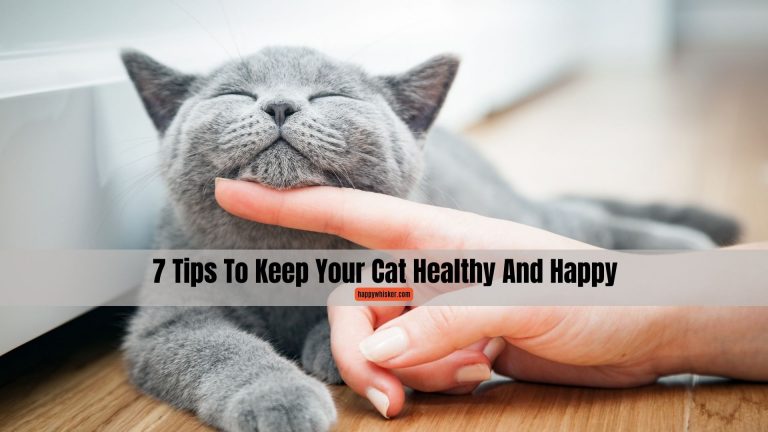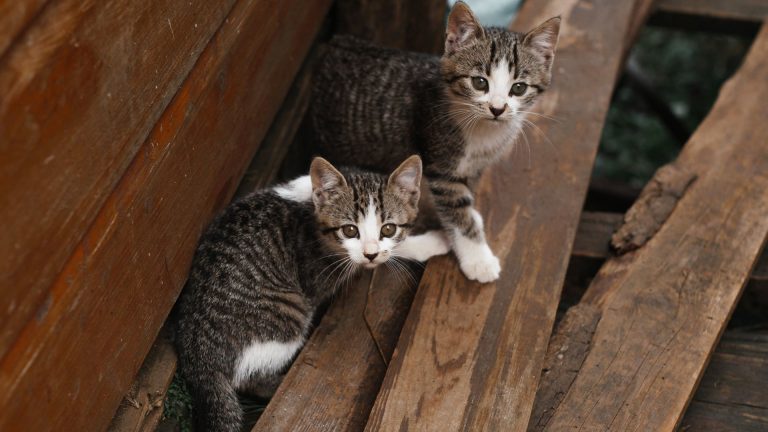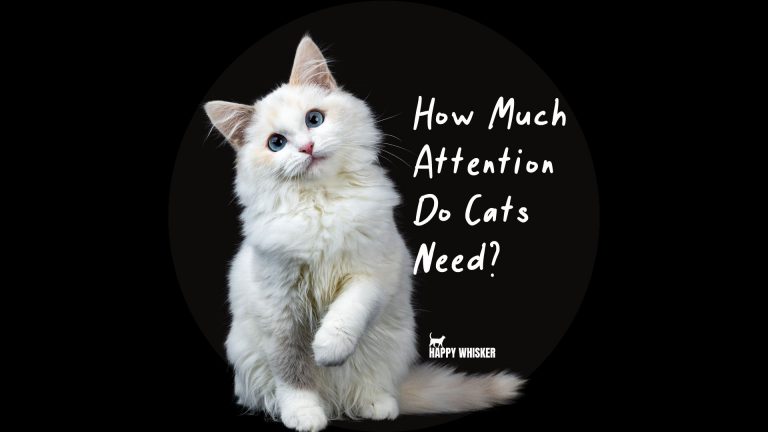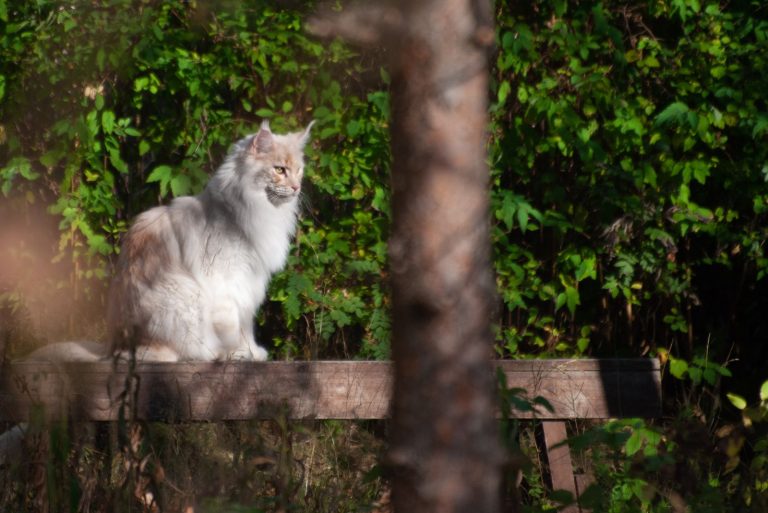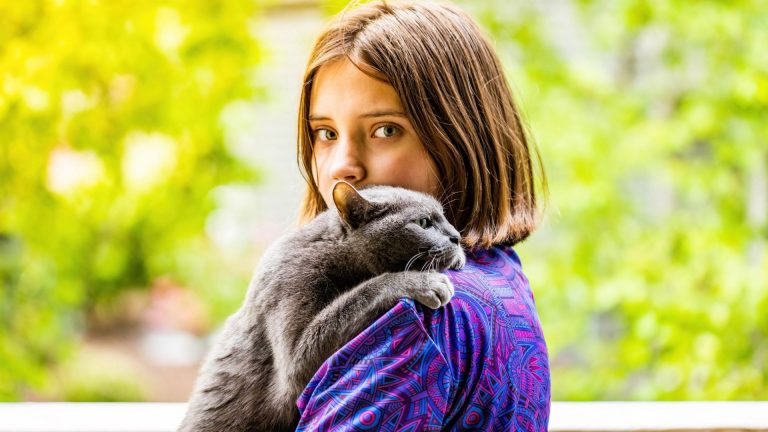What Does Grey Cat Poop Color Mean And Should You Worry?
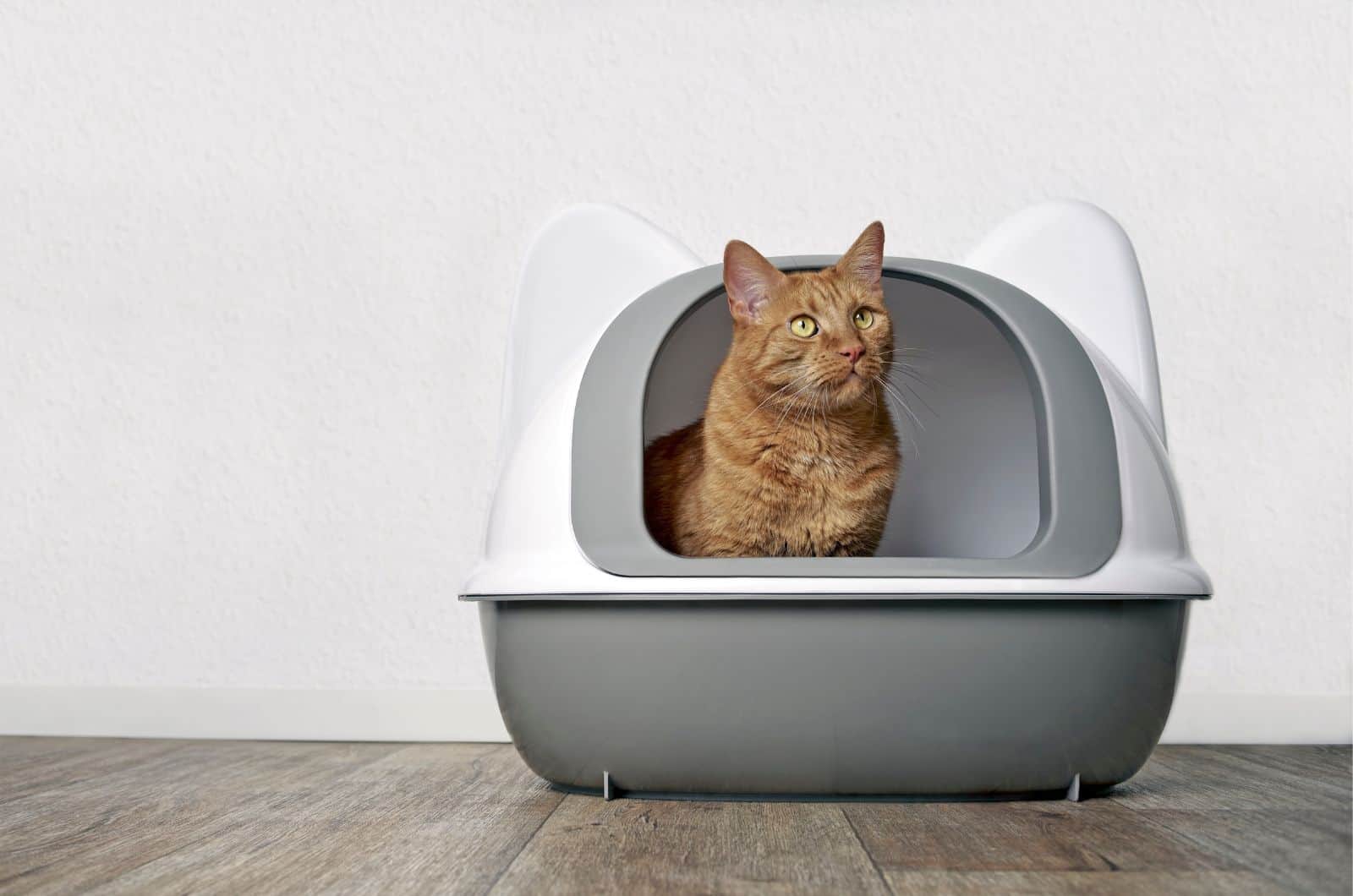
As a general rule, healthy cat poop should be in brown color, with a firm consistency. But what if your cat’s poop is another color, such as grey? Should you worry? What does grey cat poop color actually mean?
If a cat’s poop is firm and brown, as it should be, then you have no reason to worry because this is a healthy bowel movement.
However, if it appears grey, it often means that the cat lacks the bile pigments which give the stool a normal color. This means your feline friend requires a vet-check as grey cat poop may be a sign of several different health issues.
To find out what grey cat poop color means, and learn how to deal with it, keep reading as it’s quite important to determine the underlying cause and act promptly!
Causes of Grey Cat Poop And Treatment Options
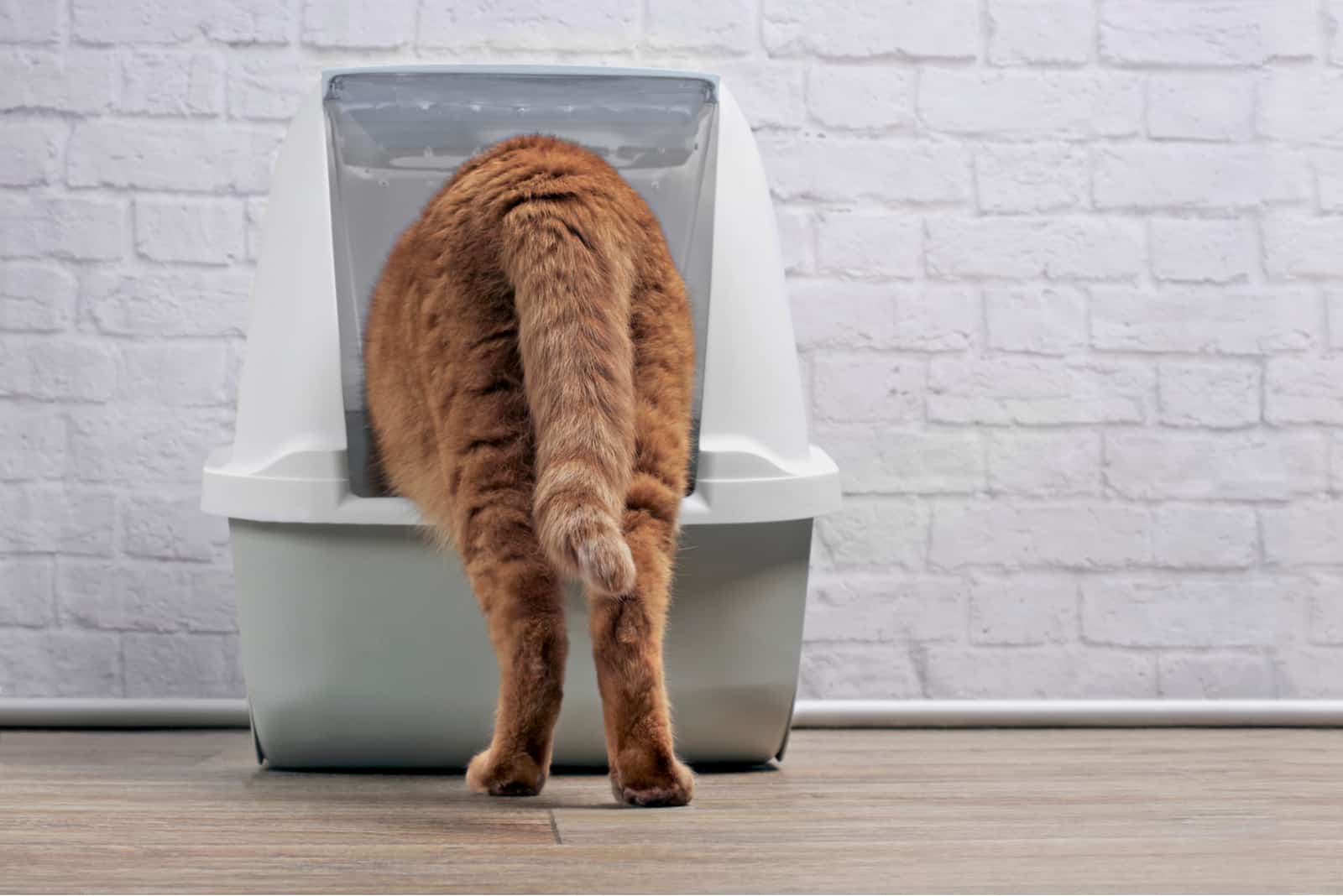
Different poop colors and consistencies are usually the result of certain health issues that your feline may be suffering from.
If your cat has grey poo, it usually means that they have certain health problems such as pancreatitis, a biliary obstruction, or problems with digestive systems. It can also be a sign of many other issues.
All these potential issues require a thorough examination and some professional care.
You might be wondering how can I help my cat? Read on to discover 4 possible reasons for grey cat poop as well as potential treatments and solutions for each problem.
Pancreatitis
The pancreas is a very sensitive organ that is involved in the production of the enzymes necessary for food digestion. However, when the pancreas becomes inflamed, cats cannot digest food properly, and this condition is called pancreatitis.
Pancreatitis is one possible reason for grey cat poop, especially if it’s accompanied by other symptoms such as vomiting, weakness and lethargy, loss of appetite, fever, weight loss, and abdominal pain. Unfortunately if the condition is severe, it may even lead to death.
This is why it’s crucial to take your kitty to the vet for an examination if you notice grey stool or any other symptom of pancreatitis. It’s also important to get the right diagnosis so that your vet can start treating the cat immediately.
As far as getting a diagnosis is concerned, the vet will usually run some laboratory tests. If the tests show an elevated white blood cell count, pancreatitis is confirmed, and treatment should begin.
Treatment
It may sound unusual, but pancreatitis in the early stage is usually treated with rest. So, the cat should rest a lot in order to allow its body to heal the pancreas itself.
In more serious cases, the vet will prescribe medications, intravenous fluids, and anti-inflammatory medications if necessary.
In addition to all of that, special dietary changes will be inevitable for cats with pancreatitis.
If you follow the vet’s instructions and your cat receives the proper treatment, it should recover quickly, and you won’t have to worry about further negative consequences.
Biliary Obstruction
Another health issue that may result in grey cat poop is a biliary obstruction, also called cholestasis.
This condition develops when the small intestine’s ability to absorb bile from the gallbladder is compromised. The cat may become quite unwell if the bile duct is blocked because it is unable to receive nourishment.
Moreover, this issue can be connected to liver disease or colitis, and can be recognized because it’s usually accompanied by similar symptoms as those caused by these conditions such as vomiting, diarrhea, increased appetite, loss of weight, loss of appetite, dark urine color, jaundice, tiredness, etc.
If you notice grey cat poop followed by any of these symptoms, it’s essential that you take the cat to the veterinary clinic.
The vet will establish a diagnosis based on the cat’s health history, blood tests, urinalysis, x-rays, and stool sample analysis.
Treatment
Finally, after the vet determines the cause of the abnormalities, he’ll start treating the bile duct obstruction.
In most cases, this issue is treated with medications that work on decreasing inflammation, but the vet may also provide the cat with antibiotics in order to treat or prevent infection.
Furthermore, in severe cases surgery is required, especially if the cause of the bile obstruction is tumor or cysts.
Other treatments may include IV fluids, especially if the feline is weak and dehydrated, and changes in the cat’s diet.
Usually, cats recover very well after a biliary obstruction, but it’s essential to follow the vet’s instructions in order to prevent side-effects and complications from occurring.
Infections Of A Digestive System

Grey cat poop may also be a result of infection of the digestive system. If a bacterial infection develops and builds up in the cat’s GI tract, it may lead to difficulties with defecation and result in grey stool.
Symptoms that may indicate infection of the digestive system include vomiting, diarrhea, abdominal pain, smelly poop, loss of appetite, and similar.
If you notice any of these symptoms, you should take your feline friend to the vet so that he can determine the right diagnosis and start the right treatment.
Treatment
The treatment of digestive system infections usually includes antibiotics, and it’s highly important to keep your kitty well hydrated while they are being treated. As soon as the cat starts recovering, its poop colors should return to normal.
Other Reasons
Other reasons for grey cat poop include high stress levels or other aspects of the cat’s lifestyle.
Cats are very sensitive when it comes to their routine, so even a slight change may result in negative consequences such as a different stool color.
Furthermore, if you haven’t cleaned the cat’s litter box for a while, the cat’s poop will usually have turned grey, and this is normal.
However, you shouldn’t let that happen as cats need to have clean litter boxes, otherwise you may face various issues including defecation outside of the litter box.
Solutions
If your cat has grey stool due to stress, you can consult with your vet or take the cat for a check-up. If the cat has no health issues, the change is probably due to stress.
It is helpful to know how to read your cat’s body language and find out what stresses them so that you can reduce that stress and make sure your cat feels comfortable and safe.
As far as the litter box is concerned, make sure you clean out the clumps frequently and wash it thoroughly, as well as changing the litter often in order to avoid different odors in your environment.
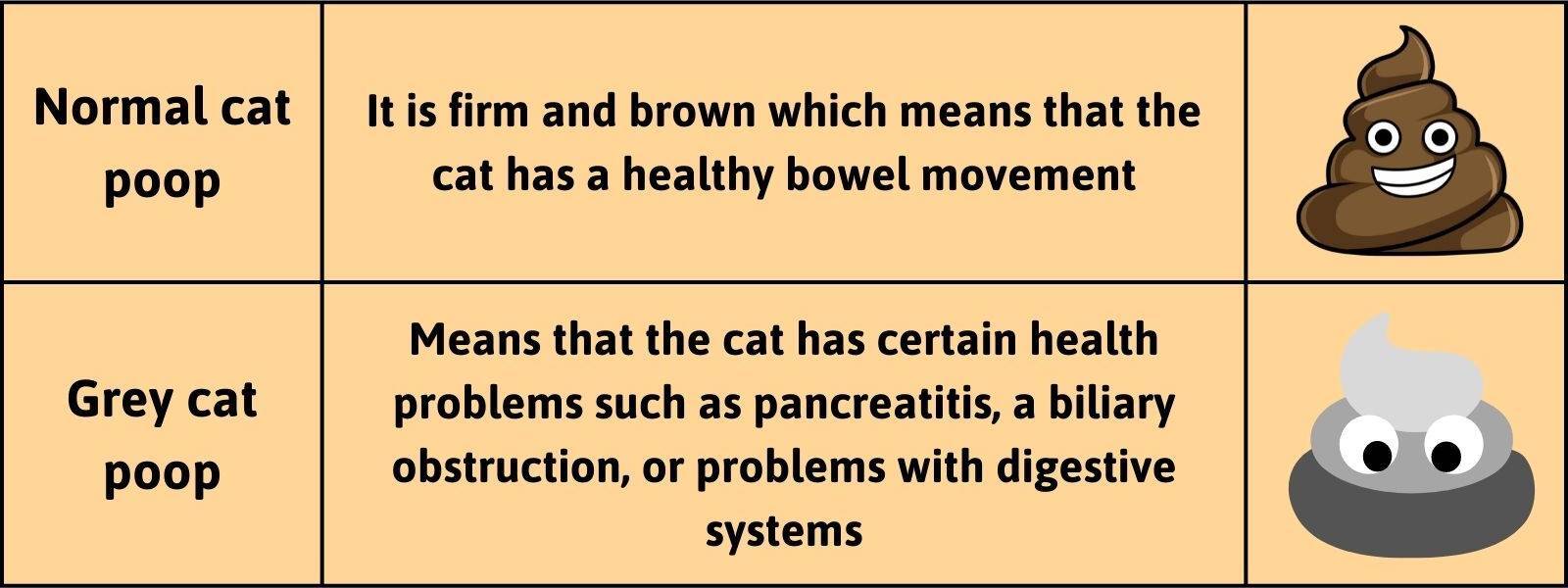
Other Causes Of Grey Cat Poop And Their Meanings
If you notice grey cat stool, it’s not a good sign, but several things may help you in determining the severity of the condition. So, a cat poop may appear in several shades of grey, and every shade indicates certain issues…
• Grey runny or watery poop – if you notice your cat pooping more frequently, resulting with grey watery poop along with a foul smell, it’s usually diarrhea caused by a Coccidia infection, hence the grey color.
It may be very difficult to detect this infection because the parasite which causes it is not visible with the naked eye, only after the examination by a veterinarian.
Therefore, if you notice grey watery stool, make sure you visit the vet as he’ll provide the cat with proper treatment after running some tests and determining the underlying cause.
• Light grey poop color – as previously mentioned, a light grey poop color usually appears if there are problems with the gallbladder, liver, or biliary issues.
• Clay poop color – cat stool that looks like clay may be unusual, and it may happen when the cat has issues such as pancreatitis, liver, or gallbladder problems, all of which require special veterinarian help.
Colors That Shouldn’t Appear In Healthy Cat Poop
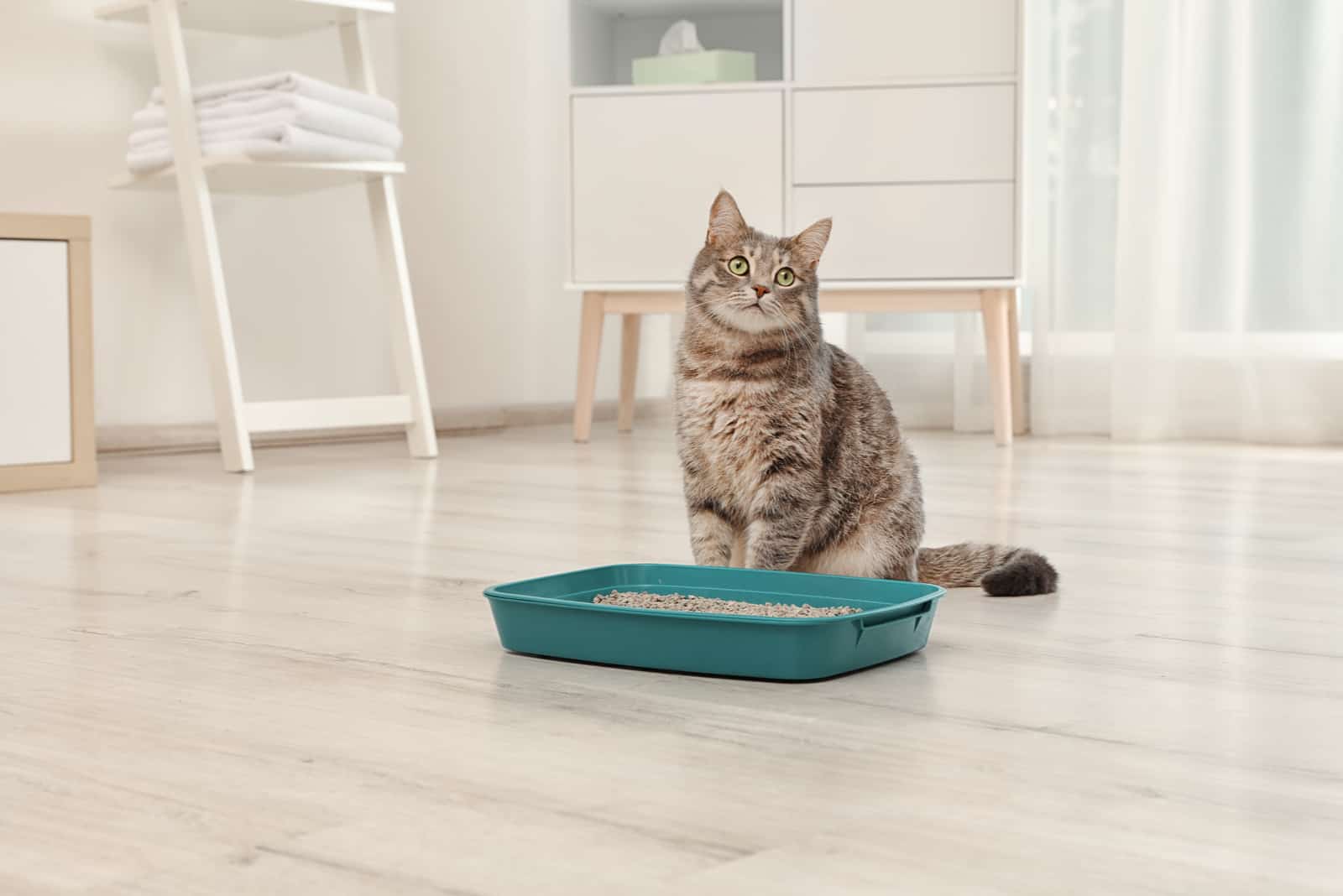
Knowing that normal, healthy cat poop should be deep brown in color, or in similar brown shades, depending on the food that the cat eats. Let’s look at other colors that may also appear in the cat’s stool.
When my friend saw that her cat had a red stool, she was terrified and contacted me immediately.
Luckily, we were able to discover the underlying cause for the red poop color, provided the cat with the appropriate treatment and it recovered in the blink of an eye.
The following poop colors are never a good sign, so as soon as you notice something has changed, take your feline friend to the vet for its own good.
Each of these stool colors indicate health issues that your cat may be suffering from. They may vary from mild to severe, so keep reading so that you’re familiar with them and know what to do if your cat needs your help.
• Green cat poop color – if your feline’s poop is green in color, don’t panic immediately. The reason for this poop color may be because your cat has been eating a lot of grass recently.
However, it’s still important to take the cat to the vet for an examination, as green poop may also be a sign of parasitic or bacterial infections.
• White cat poop color – white poop is very unusual for cats, therefore, the moment you notice it, you can be sure that something’s not quite right.
The white poop color usually indicates health issues such as kidney and liver problems, bacterial and parasitic infections, issues with the bile duct, or a reaction to dietary changes.
• Red cat poop color – if you notice that your cat’s stool is red or brown with red traces, it may be serious. The red color is usually blood, which means the cat is bleeding from the anus.
The most common cause is infectious disease or bacterial infections. Either way, it’s highly important to take the cat for the vet so that they can be treated right away.
• Black cat poop color – just like red poop, black is a dangerous sign of bleeding, therefore it needs to be taken seriously. Black cat poop color, especially if it’s tarry, may be a result of bleeding from the large intestine or gastrointestinal tract, and that certainly shouldn’t be neglected.
As soon as you notice that type of cat poop and symptoms such as weakness, lethargy, tiredness, vomiting, and similar, make sure that you take your feline friend for a vet-check.
• Orange cat poop color – this poop color may be tricky because it can indicate both minor and severe issues. The reason for orange cat poop may be due to certain types of food, especially if it contains artificial colors or beta carotene.
On the other hand, it may indicate more severe issues which require professional attention such as liver or gallbladder issues, bacterial infections, and similar. So, if you notice orange poop in your cat’s litter box, it’s better to take it to the vet, at least preventively.
• Brown cat poop color – finally, if you notice brown color of your cat’s feces, you shouldn’t worry. That’s actually the color of a healthy cat poop. Also, don’t worry if the stool appears to be light or dark brown in color, as the shades usually just depend on the type of food that the cat consumes.
A cat’s stool should be neither soft nor too hard, but firm, without leaving traces behind. Any difference in consistency may indicate health issues, which is another thing that requires veterinary attention.
Different Poop Consistencies
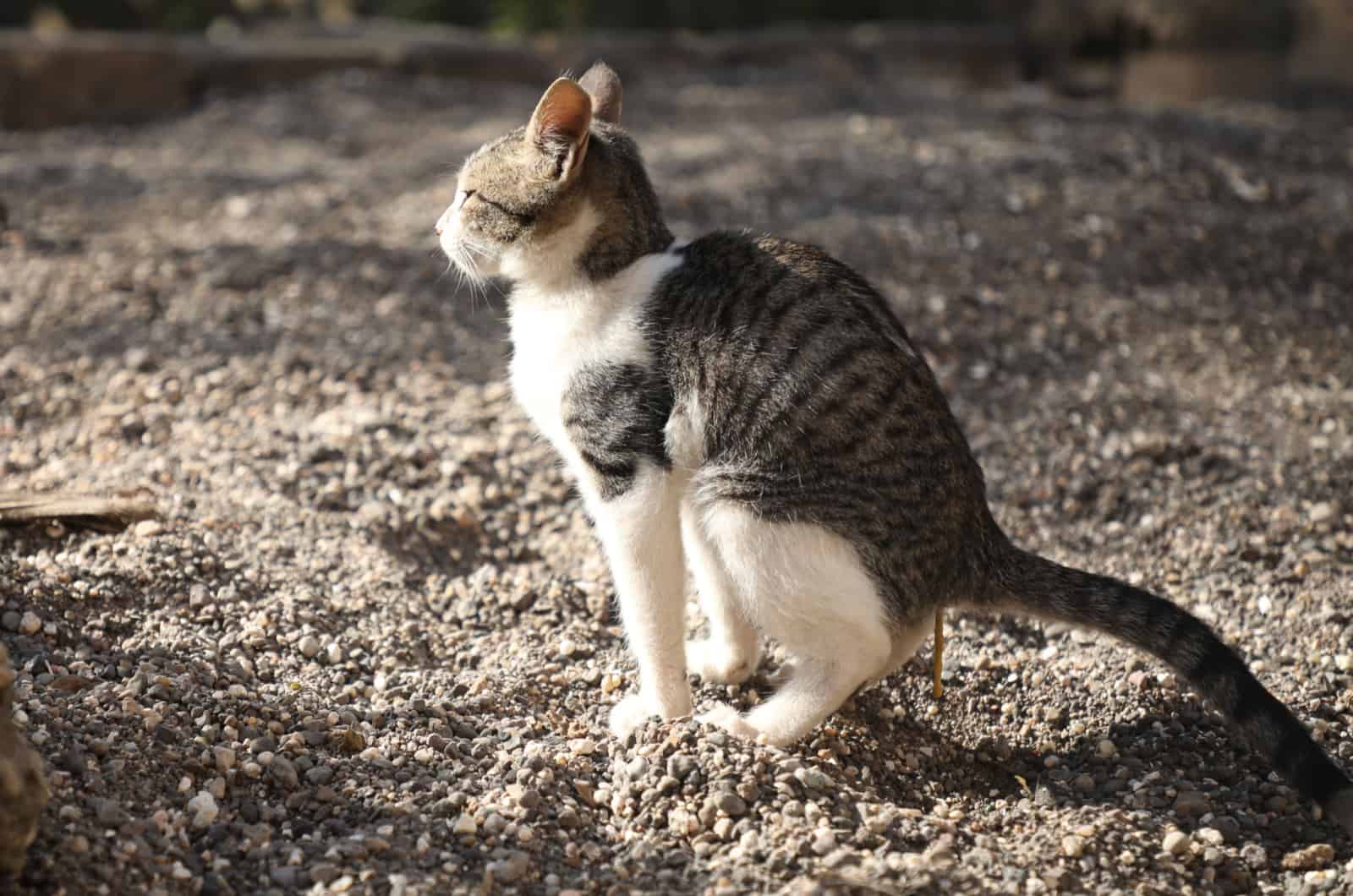
It’s also crucial to pay attention to poop consistencies; a healthy cat poop should be firm, otherwise it suggests certain health problems that the cat may have.
Make sure your cat’s stool is firm, but not too hard or too soft. If you notice that your cat’s stool is soft rather than firm, it may be a sign of an upset stomach or a response to dietary changes. In addition, a soft stool may be a result of stress.
• Diarrhea – if you notice that your feline friend has a watery stool mixed with mucous, it usually means that your kitty is suffering from diarrhea. However, there are a few things that may cause cats to leak brown fluid out of anus, and these issues definitely require special care. Diarrhea may occur due to:
– Inflammatory bowel disease(IBD) – inflammation or irritation of the GI tract.
– Parasitic infection – intestinal parasites roundworms and tapeworms that lead to problems with the digestive tract.
– Food intolerances – cats should be fed with cat food only, as human food or other types of food may be harmful for them. For example, most cats enjoy milk, but it causes them diarrhea in most cases as they’re lactose intolerant.
• Constipation – if you notice that your cat has difficulty defecating, dry hard poop, or that it hasn’t pooped for a couple of days, it’s an obvious sign that your feline is suffering from constipation.
Again, it’s important to determine the exact underlying cause of the constipation so that the cat can be treated effectively. In case of constipation, it may be that your cat lacks digestive enzymes or it is suffering from more serious issues.
To prevent constipation, provide the cat with a lot of fresh water and feed them with wet food as it’s high in moisture, and of course, a vet-check is important if you notice any signs of problems.
After a detailed examination, the vet may consider giving the cat probiotics or other medications and therapies.
Final Thoughts
As a responsible cat owner, you should pay attention to the cat’s stool when cleaning out the litter box.
If your cat’s stool appears to be grey, runny, clay-like, or similar, don’t panic but you should take your kitty to the vet for an examination as grey cat poop can be a sign of several health issues that need to be treated promptly.
Usually, grey cat poop suggests that the cat has pancreatitis, infections of the digestive system, or a biliary obstruction. Each of these health issues should be diagnosed by a vet who will provide the cat with the appropriate treatments.
If you follow the vet’s instructions, your feline will recover quickly, and you can continue hanging out with your furry best friend without worries!
Related Content
• Why Is My Cat Pooping On Floor Randomly? Reasons & Solutions
• Prolapsed Rectum Kitten: Causes, Symptoms And Treatment
• Why Is My Cat Leaving Blood Drops Behind? Explanation Below!
Like this post? Share or pin it for later!



